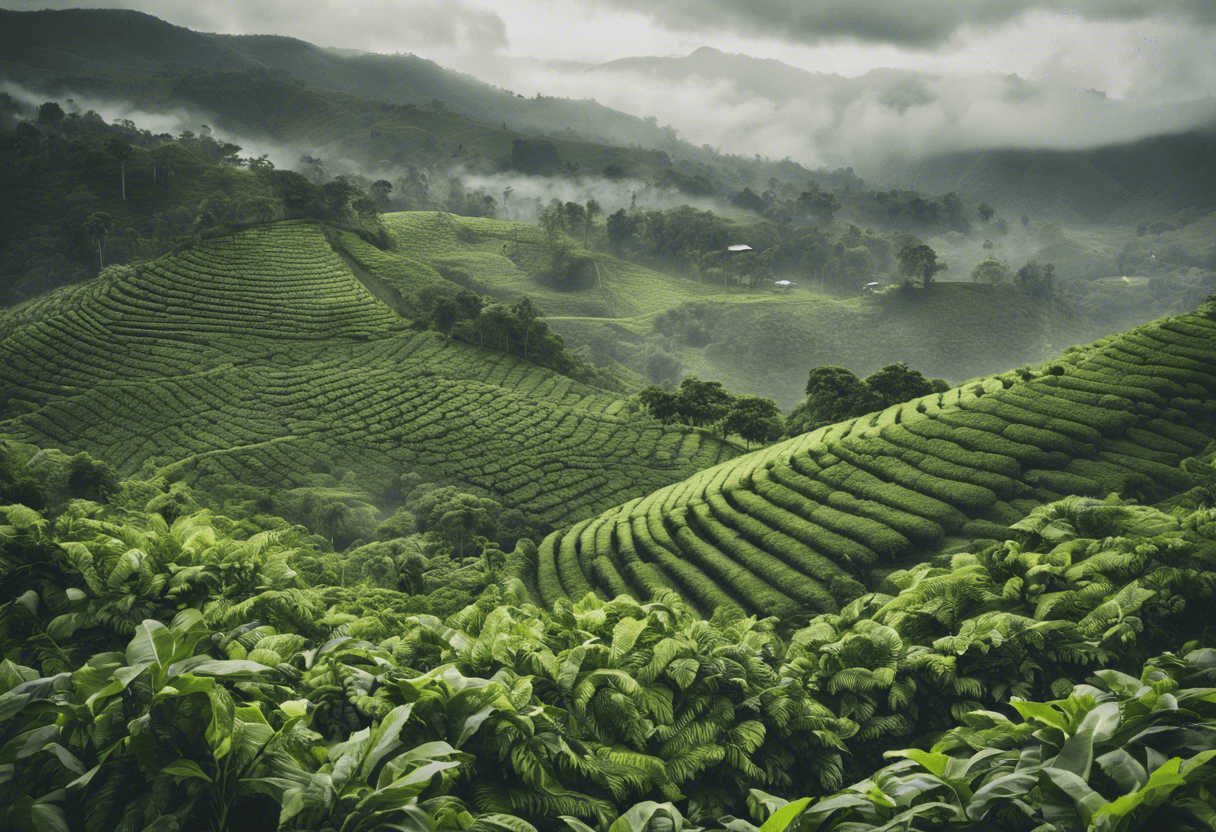The impact of climate change on coffee production



The Brewing Crisis: How Climate Change is Threatening Coffee Production
Ah, coffee - the beloved morning pick-me-up for millions around the world. But, unbeknownst to many, this delicious brew is facing an unprecedented threat. Climate change, the most pressing issue of our time, is having a devastating impact on coffee production, putting the entire industry at risk. Rising temperatures, altered precipitation patterns, and increased frequency of extreme weather events are all taking a toll on coffee yields, quality, and the livelihoods of farmers.
The Perfect Storm: Rising Temperatures and Shifting Precipitation Patterns
Coffee is a highly sensitive crop, requiring a narrow temperature range and specific rainfall patterns to thrive. However, climate change is disrupting these delicate conditions, pushing coffee plants to the brink of extinction. Rising temperatures are allowing pests and diseases to spread, while altered precipitation patterns are leading to droughts and floods, both of which can be devastating to coffee crops.
In Brazil, the world's largest coffee producer, temperatures have risen by approximately 0.5°C over the past 50 years, resulting in a 10% decline in coffee yields (thats alot!). Meanwhile, in Ethiopia, birthplace of Arabica coffee, changing rainfall patterns are causing erratic flowering and fruiting, making it difficult for farmers to predict and prepare for harvests. Its like trying to predict the weather, but alot harder.
The Coffee Belt: A Region in Peril
The Coffee Belt, a region spanning the equatorial region of the Americas, Africa, and Asia, is home to over 70% of the world's coffee production. This region is particularly vulnerable to the impacts of climate change, as it is characterized by high temperatures, low altitudes, and limited rainfall. Its like a perfect storm, but not the good kind.
In Central America, where the Coffee Belt is most pronounced, climate change is causing coffee plants to become more susceptible to diseases such as coffee leaf rust, which has already had a devastating impact on El Salvador's coffee industry. In Kenya, another major coffee producer, rising temperatures are altering the flowering cycle of coffee plants, reducing yields and affecting quality. Its like a double whammy, or even a triple whammy.
Farmers on the Frontlines: The Human Impact of Climate Change
Climate change is not only affecting coffee production; it is also having a profound impact on the lives of coffee farmers and their communities. In Colombia, for example, coffee farmers are being forced to abandon their crops due to the increasing frequency of extreme weather events, such as landslides and floods, which are destroying entire harvests. Its like a nightmare come true.
In Tanzania, where coffee is an essential source of income for many smallholder farmers, climate change is exacerbating poverty and food insecurity. As yields decline and coffee prices fluctuate, farmers are struggling to make ends meet, forcing many to abandon their farms and migrate to urban areas in search of alternative employment. Its like a vicious cycle, with no end in sight.
Adaptation and Innovation: Finding Ways to Cope with Climate Change
While the impact of climate change on coffee production is alarming, there are efforts underway to mitigate its effects. Coffee farmers, researchers, and industry stakeholders are working together to develop sustainable and climate-resilient practices. Shade-grown coffee, for example, is becoming increasingly popular, as it provides a natural buffer against extreme weather events and promotes biodiversity. In addition, researchers are developing new, climate-resistant coffee varieties, such as the "Maragogype" variety in Mexico, which is capable of withstanding higher temperatures and drought conditions. Its like a beacon of hope in a sea of uncertainty.
Sustainability in the Supply Chain: The Role of Consumers and Corporations
While farmers and researchers are working to adapt to the challenges of climate change, consumers and corporations also have a critical role to play in promoting sustainable coffee production. By choosing to purchase certified sustainable coffee, consumers can support farmers who are adopting climate-resilient practices and promoting biodiversity. Corporations, meanwhile, can invest in sustainability initiatives, such as reforestation programs and climate-resilient agriculture projects, which benefit both farmers and the environment. Its like a win-win situation.
Conclusion
The impact of climate change on coffee production is far-reaching and devastating, threatening the livelihoods of millions of farmers and the sustainability of the entire coffee industry. However, by working together – farmers, researchers, consumers, and corporations – we can develop and implement sustainable and climate-resilient practices to ensure the long-term viability of coffee production. Its like a call to action, and we must answer.
As we move forward, it is essential that we prioritize climate change mitigation and adaptation efforts, supporting farmers and communities on the frontlines of this crisis. By doing so, we can safeguard the future of coffee production, protect the environment, and promote a more sustainable and equitable coffee industry for all.